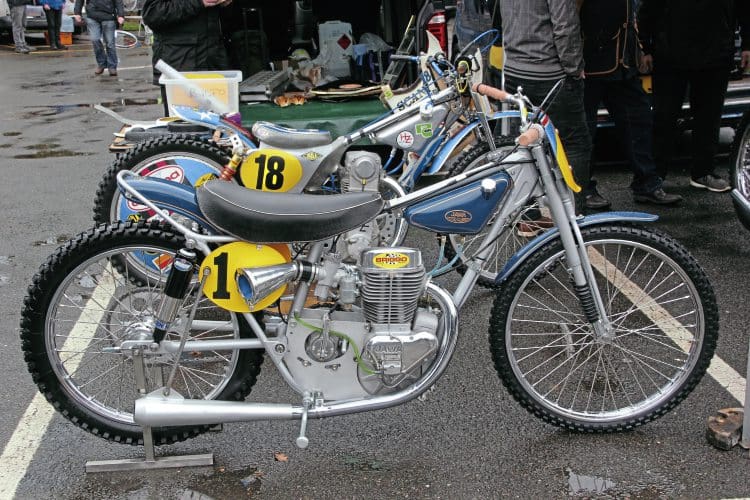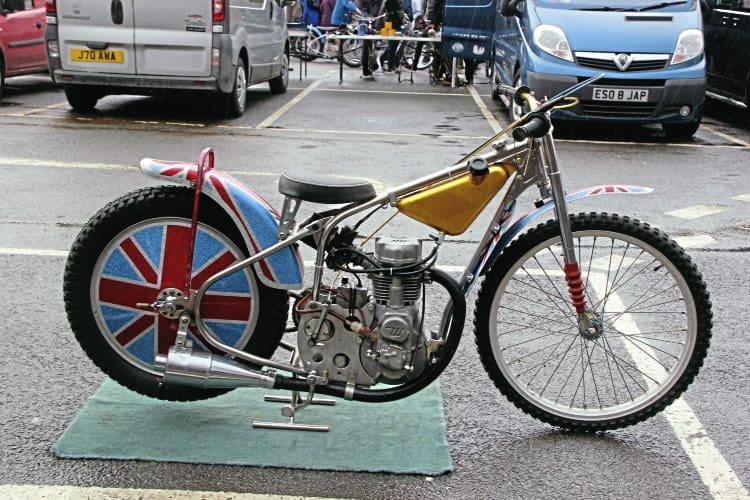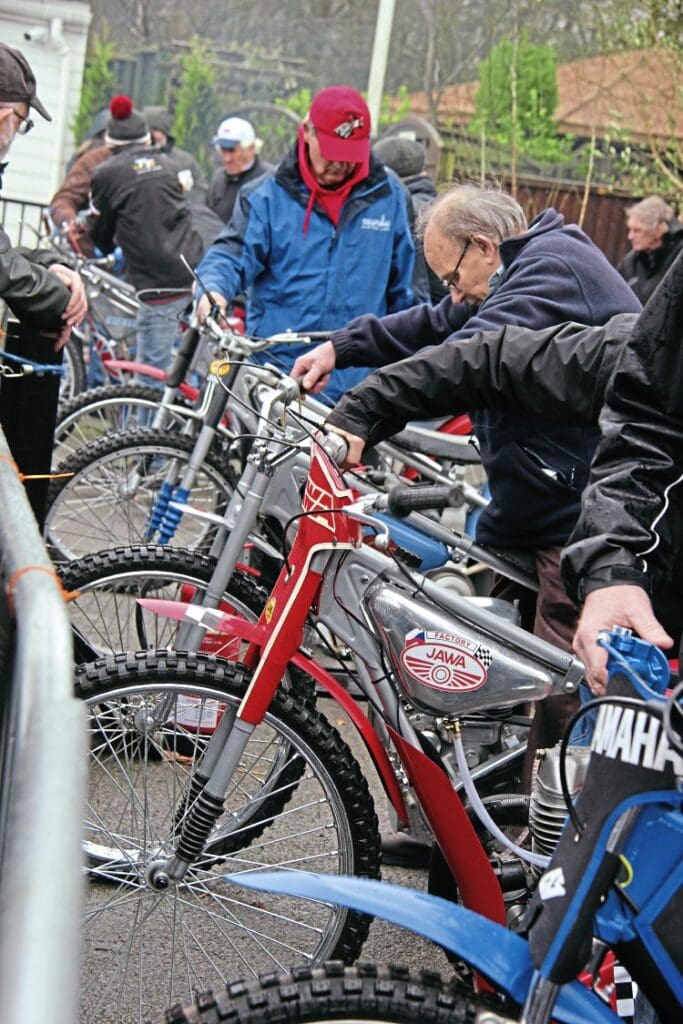The 2020 Speedway Anniversary was held at the Speedway Museum, Broxbourne, Herts, on February 23.
Words and photographs: ALAN TURNER
The long blonde hair and celebrity image may have been replaced with a more sober look, but the appearance of 1980s track race star Egon Müller stirred enthusiasts’ memories and created plenty of interest at the annual Anniversary of Speedway, celebrated at the Speedway Museum located within Paradise Park, the large zoo run by former rider Peter Sampson.
Enjoy more Classic MotorCycle reading in the monthly magazine.
Click here to subscribe & save.
Egon’s invitation had been extended when he was asked to take over the presidency of the World Speedway Riders’ Association. Handing over the chain of office was the last official duty of outgoing president Mike Broadbank.
Many years’ involvement in showbusiness meant a microphone held no fear for the new president and his inaugural speech, delivered in perfect English, expressed his gratitude at being accorded the honour.
Egon’s riding career extended over a number of years. He contested several speedway world championships, decided at a single meeting in those days.
A mix of results peaked with a world crown in 1983, the only German rider to do so. Added to this were six German speedway championships and eight podiums in long-track.
While this was just one of many happenings inside the marquee, outside was the usual array of stands.

A number of speedway clubs were drumming up support for the coming season, there were displays of machines and memorabilia organised by supporters and enthusiasts. Always strong on nostalgia, there were many famous faces wandering around, happy to chat and pose for photos.
This year, a number of unusual bikes could also be found, including a recently-discovered Japanese speedway bike. Pioneer of British speedway, Johnnie Hoskins, had bought a couple of the bikes as an experiment when he was the promoter of Canterbury speedway in the 1970s.
Elsewhere, Andy Day had secured a real rarity, a 1928 Comerford-JAP. This dated from the inaugural year of British speedway, when it was still finding its way to becoming the major sport it soon achieved. Thames Ditton dealers, Comerfords, saw a business opportunity and ending up building 300 speedway frames, but few now survive.
In 1928, the Prestwich family had still to be convinced on a policy that saw its JAP engines eventually dominate the sport for 30 years.
The engine fitted to Andy’s bike pre-dates the dedicated 500cc Speedway unit. Seemingly chosen as having suitable attributes for track racing, it is actually a 350cc Sports model.

The bike was raced by Horace ‘Hoppy’ Osborne, who is not recorded as one of speedway’s enduring stars. Andy traced the bike to Oxford, and bought it from the rider’s grand-daughter.
The bike was complete, but dismantling revealed engine damage that was probably the cause of its abandonment.
Restoration took five years. Virtually nothing was obtainable for the engine. What could not be restored had to be adapted from something else, or remade. A camshaft pinion was beyond salvaging and its replacement involved a nine-month wait. The bike is finally up and running and it is hoped to give it some mileage on the big speedway track on the Isle of Wight this summer.
The years of the Cold War influenced speedway on both sides of the Iron Curtain. In the earlier years, the Rotrax-JAP was favoured by many of the top riders. Unattainable for Polish riders, two enterprising engineers produced the ‘FIS,’ a truly complimentary copy of the inspiration.

Ironically, in later years, the Czechoslovakian Jawa was the bike to have and now it was the turn of British riders to apply for the limited numbers that were allowed to cross the political divide. Several examples could be found at the anniversary.
The fire-up of a selection of bikes, every hour, on the hour, always attracted a large throng, happy to ignore the cold wind and occasional showers for that irresistible scent of alcohol fuel and castor oil and to briefly relive the times when it seemed nowhere in the country was far from a speedway club.
View more images of this event and read more News and Features at www.classicmotorcyle.co.uk and in the July 2020 issue of The Classic Motorcycle – on sale now!
Advert
 Enjoy more The Classic MotorCycle reading in the monthly magazine. Click here to subscribe.
Enjoy more The Classic MotorCycle reading in the monthly magazine. Click here to subscribe.



